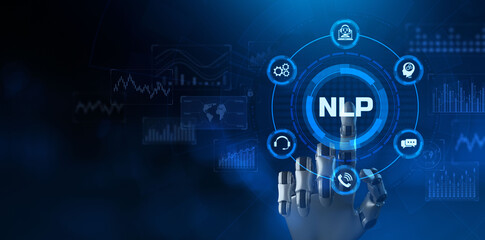A subfield of artificial intelligence, computer science, and linguistics, natural language processing (NLP) concerns itself in general with the interactions between computers and human language and in particular with how to program computers to process and analyze natural language data.
Toward the end of developing software that converts human speech into text, speech recognition has remained one of NLP’s primary objectives. Natural speech often has few pauses between words and some of words fuse together at fast speeds. When specific letters blend together, linguists call this coarticulation. Therefore, NLP software must include the component of speech segmentation, or the ability to separate individual words.
Software must also be able to recognize various accents, dialects, and inflections on multiple syllables when determining words in natural speech. This means that programmers need to accommodate a wide variety of input and categorize each word by the correct meaning based on context.
Another application of NLP involves the conversion of text to speech via a computer program. Such software is commonly used by those with visual impairment. Much like speech recognition, text-to-speech software uses word segmentation; analogous to speech segmentation, this refers to the program’s ability to separate and determine the meaning based on context of individual words in running text.
While segmentation in English is relatively easy because of the spaces between words, it proves more challenging in languages like Chinese and Japanese where the absence of such boundaries makes it difficult to distinguish one word from another. This means that the software needs to understand written vocabulary and morphology, which studies how root words can be changed with prefixes and suffixes to change the meaning of the root.
Many commercial entities use NLP to interact with customers online and over the phone. In dialogue management systems, a computer is designed to speak with humans. This involves the added complexity of analyzing natural speech and responding immediately based on the context.
Numerous companies use online forums or “chat bots” to help customers with issues. This is common in banking, insurance, tax preparation, and dozens of other industries. Customers can ask a question via text, and the program will respond quickly with information. These are often pre-programmed answers based on key words in the question and may also contain helpful links.
NLP is also used by software programs to detect and correct grammatical errors in written text. Software programs such as Microsoft Word have used this technology for quite some time. Other applications of this technology are used on web browsers and other platforms that are not downloaded to the computer itself.
Translation software also uses NLP. The process is highly complex, as the computer must analyze not only the words of the first language, but also the context and any colloquialisms or idiomatic expressions. The software then translates the string of words into the new language, which may not have the same intended meaning.
Google Translate software uses NLP and can listen to human speech in one language, display the written text, and then translate it to a new language. The application also allows users to input text in one language, and the software will speak aloud in the new language, enabling full communication between parties with no common language.





No comments:
Post a Comment
Note: Only a member of this blog may post a comment.